In 2016, there have been a number of incidents of insect-infested log furniture imported into Minnesota from foreign origins. This can occur when infested trees or logs are manufactured into furniture without proper processing. Insects may damage the furniture they are infesting and there is a serious risk that they could harm our trees and forests when they emerge from the furniture and search out new hosts. The emerald ash borer is an example of an exotic wood borer that is currently having a big impact on Minnesota. We do not want to introduce more species like this into our environment.
Citizens who have purchased log furniture in the last two years or are considering a purchase of log furniture need to be aware of this issue and investigate if there are indications of insect infestation. Live larvae have been found actively tunneling under the bark of rustic log furniture up to three years after the furniture was purchased and relocated to residential homes.
select a heading to learn more:
-
-
If the furniture originated from inside the United States that is good. However, while the primary concern at this time is furniture originating from outside the U.S., there are wood boring insects present in some areas of the U.S. that should not be moved to other parts of the country. More investigation is needed if the furniture shows signs of insect infestation.
If the furniture originated from outside the U.S. it should have been treated before shipment to the U.S. to destroy any pests that might be lurking in or on the furniture. For this furniture contact the MDA whether there is any indication of insect infestation or not so that we can determine if the proper treatment occurred.
-
-
-
Both furniture with bark and without can be infested with insects. However, the risk is greater with “bark on” furniture because a wider range of insects can infest this wood and the bark can disguise the infestation. Any symptoms of insect activity will be much more easily observed in debarked furniture
-
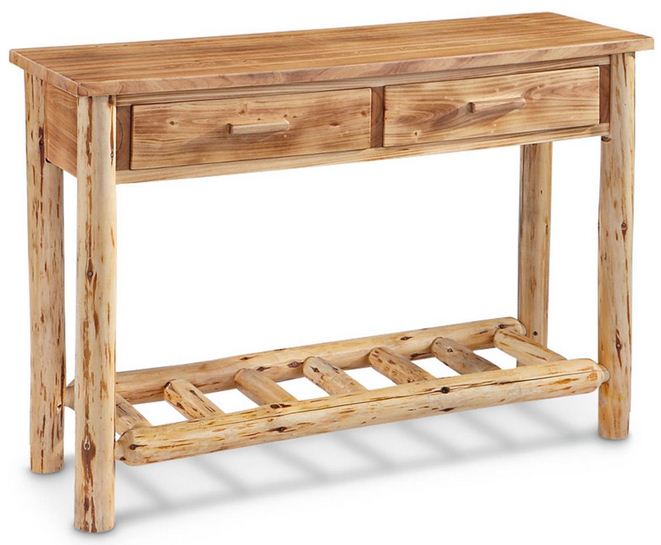
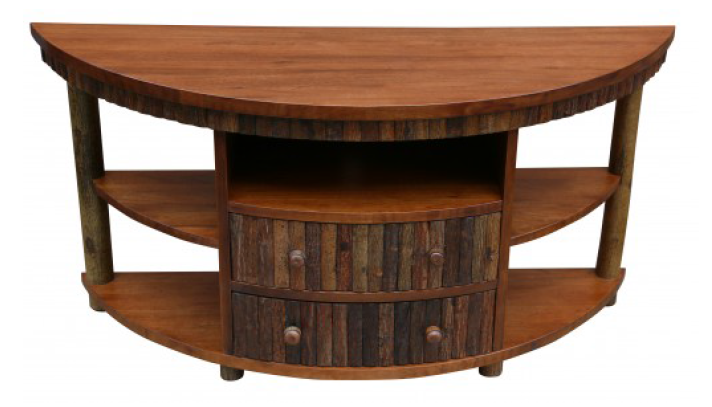
Log table with bark still attached on legs and drawer fronts.
Where do the insects tunnel? Some insects can only tunnel in the thin layer called the phloem or cambial layer between the bark and the wood. Some insects can tunnel deeply into and through the wood (xylem). Most insects tunnel in the phloem for at least part of their life cycle, leaving tunnels etched into the outer wood.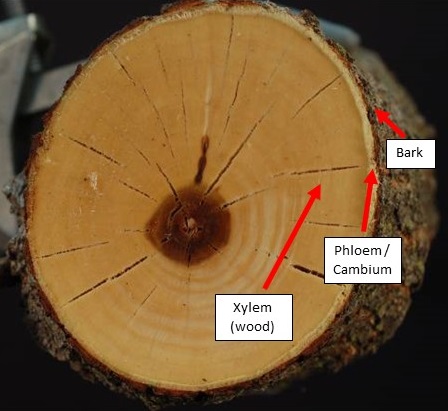
Wood cross section.
-
-
-
Holes: Holes may be found in the bark and / or wood of the furniture. Holes may be present even if insects are not, and may simply indicate that insects were once present in the wood.
Insect exit holes are visible with the bark attached and when the bark is removed.
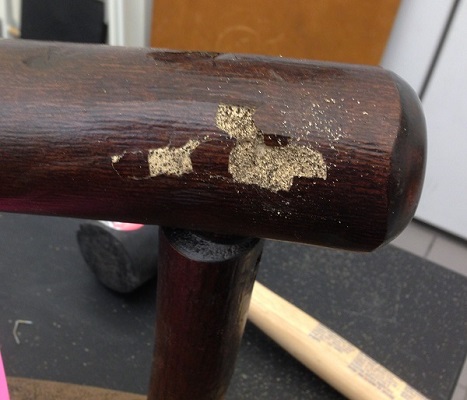
Insect hole and tunneling with frass.
Insect exit hole in wood from rustic log furniture. 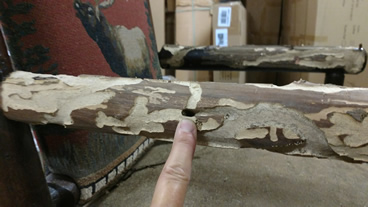
Exit holes are visible with or without the bark attached.Tunnels: Similar to holes, tunneling may be found even if insects are not and may simply indicate past insect activity.
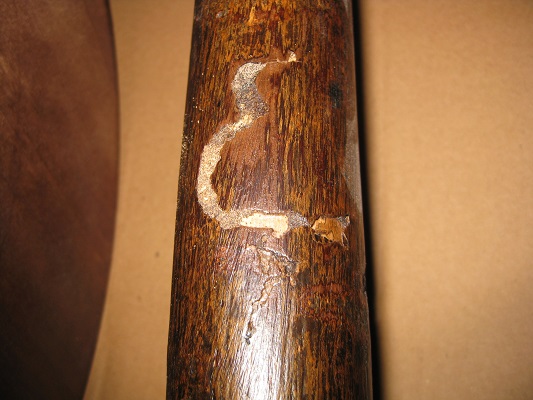
Insect hole and tunneling with frass. 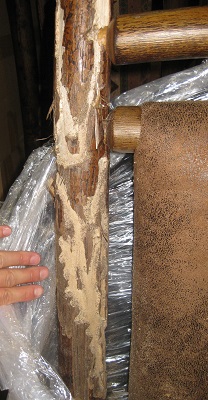
Insect tunneling in chair back support. -
Insect tunnels may be hard to see without removing the bark from rustic furniture.
-
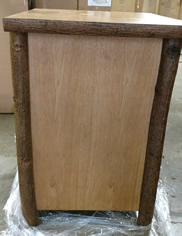
This night stand has little indication of insect activity. 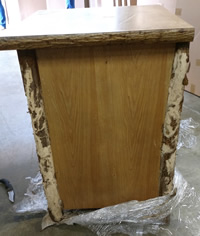
Once the bark is removed,
insect activity becomes
very noticeable.
Before removing
the bark, there is
little evidence of
insect tunnels.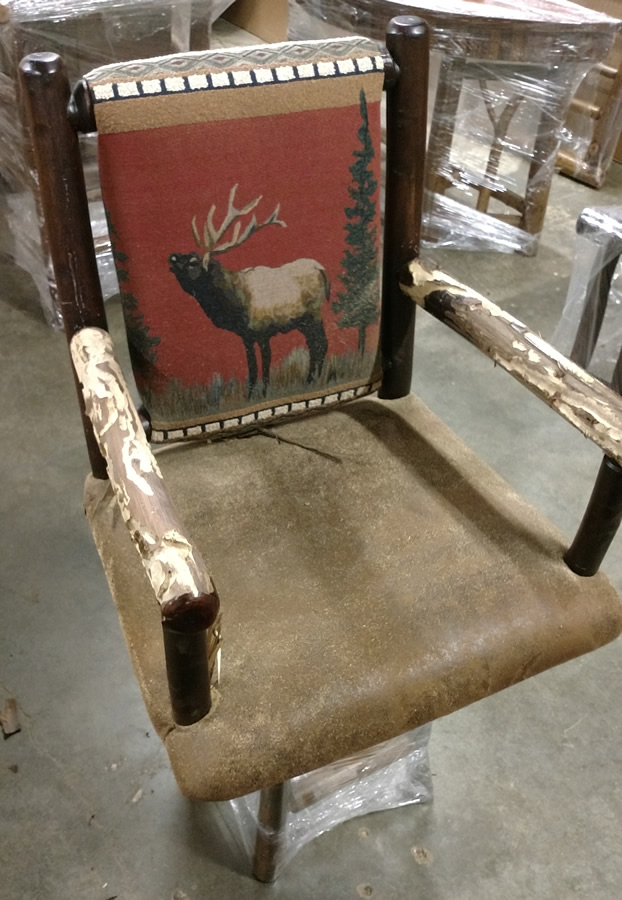
After removing the bark, extensive insect tunnels can be seen.
-
Sawdust: If sawdust (more accurately called "frass") is collecting on or near the furniture that is a strong indicator that insects may be actively tunneling within.
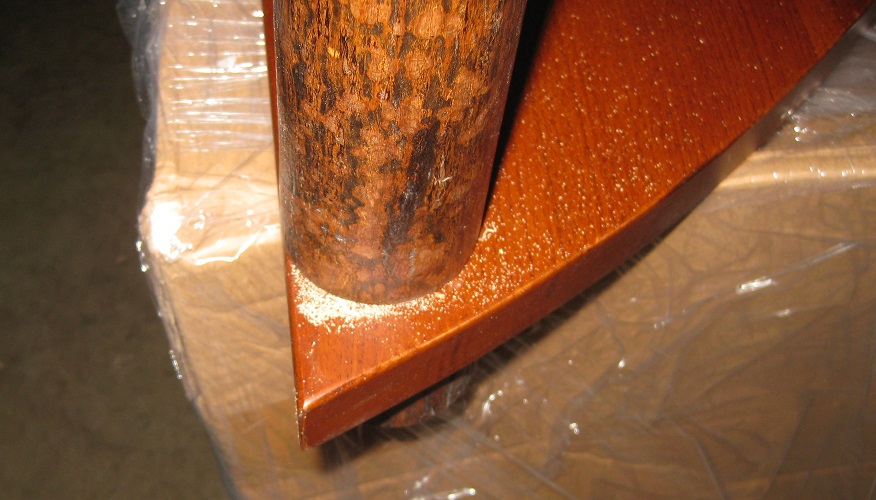
Insect frass collecting at the base of a piece of furniture. 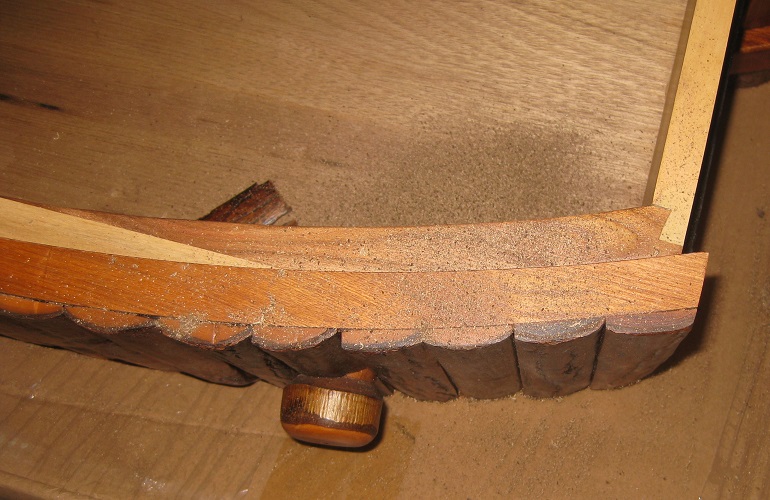
Insect frass inside drawer. Noises: Some insects make audible noises when tunneling within wood. This may sound like a squeaking or scratching noise. The audio clips below are examples of the types of noises insect may create when tunneling in wood.
-
The insect in this video is called the old house borer. It has been present in North America since the 1800’s but is not common in Minnesota.
-
In this video you can hear the noises that pine sawyer beetle larvae make. A number of species are common in North America and Minnesota.
Insects: Investigating areas with insect activity may lead to finding insects. One way to do this is to peel off the bark in the area where insect activity is suspected. These pictures are examples of an insect species, the velvet longhorned beetle, found in multiple furniture incidents during 2016.
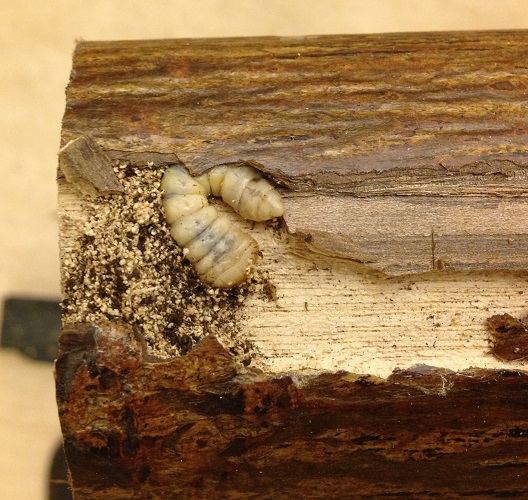
Insect larva found in a piece of furniture. 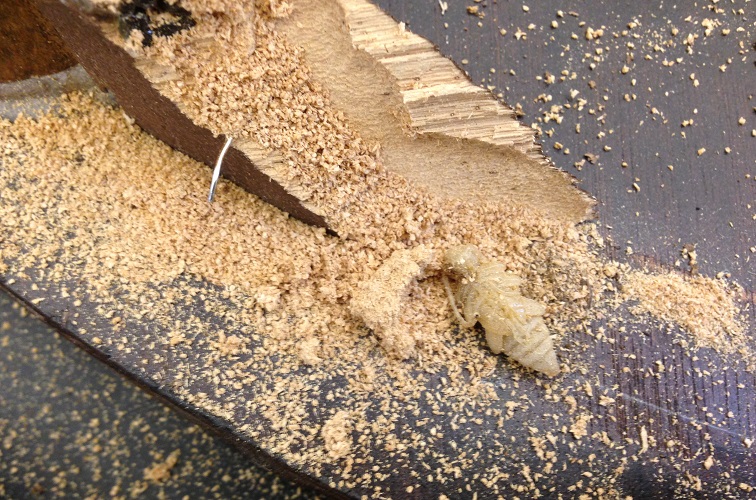
Insect pupa found in a piece of furniture. -
Contact the MDA at reportapest@state.mn.us or 888-545-6684 if there signs of insect activity are present (sawdust, noise, insects) and / or the furniture originated from outside the U.S.
-
If you know you have log furniture with bark that originated from outside the United States please contact the MDA.
If the furniture originated from inside the U.S. and no signs of insect activity are present you do not need to contact the MDA.
-

